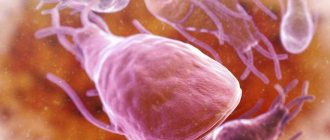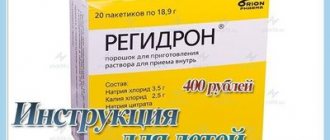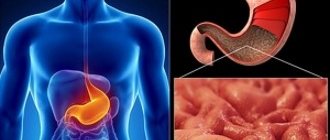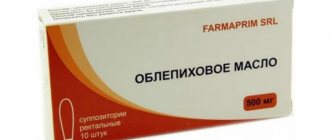Constipation is said to occur if there are problems with bowel movements. Moreover, the time period that allows us to talk about stool retention is individual for everyone.
For one, defecation is normal once every two days, while for another, such a delay causes discomfort in the abdomen. According to doctors, if bowel movements are less than once every three days, then we can talk about problems in digestive function.
For constipation, laxatives can help; they speed up the movement of stool through the intestines, but do not have a therapeutic effect. In order to restore normal peristalsis, it is recommended to take bifidobacteria. Pediatricians often recommend bifidumbacterin for constipation in infants, and since the reviews about it are positive, this is completely justified.
Basic information
The trade name Bifidumbacterin is a group of a number of commercial names for the same medicine. The active component of all types of the drug and its forms is live bifidobacteria of varying concentrations. For convenience, a generalized name of the same name is used.
Bifidumbacterin is a functional dietary supplement based on non-toxic living microorganisms.
They are identical to representatives of healthy human microflora. Taking the drug promotes their intensive reproduction and distribution throughout the intestines.
Due to this, a number of positive effects are achieved:
- reduction in the concentration of pathogenic microbes (opportunistic and pathogenic flora);
- elimination of imbalance of intestinal microflora (dysbacteriosis), prevention of its relapse;
- normalization of digestive processes due to the elimination of diarrhea, difficult defecation, flatulence, increased gas formation;
- improvement of intestinal motility and gastrointestinal motility;
- strengthening vitamin-synthesizing abilities (production of water-soluble vitamins due to the activation of beneficial microbes);
- activation of the body's defenses;
- regulation of the balance of pathogenic and non-pathogenic microorganisms after an infection, antibacterial treatment.
Bifidumbacterin for newborns is used for therapeutic purposes, less often - to prevent pathologies. It is effective for imbalance of intestinal microflora, increased gas formation, diathesis, and iron deficiency conditions. Bifidumbacterin is often prescribed during the transition of a baby to formula milk.
Chemical composition
Bifidobacterium bifidum is the active pharmaceutical substance (active ingredient) of the drug in all forms of release. Information about their composition is presented in the table.
| Name | Main substance | Dosage form | Auxiliary components |
| Bifidumbacterin | Bifidobacterium bifidum | 1. Capsules | Content:
Capsule:
|
| 2. Tablets |
| ||
| 3. Bottles with dosed dry substance (lyophilisate) |
| ||
| 4. Powder (sachets and bottles) |
| ||
| 5. Liquid emulsion |
| ||
| 6. Rectal suppositories (suppositories) |
|
Impact on the newborn's body:
- paragraphs 1, 2, 3, 4, 5 - treatment of dysbiosis, restoration of the gastrointestinal tract, increased immunity;
- item 6 - treatment of dysbiosis, anemia, diathesis, prevention of rickets.
Release form
Bifidumbacterin is a dietary supplement that cleanses the intestines from the pathogenic effects of microbes (opportunistic and pathogenic). At the same time, the spread of beneficial bacteria significantly improves the intestinal flora of the newborn. There are a number of dosage forms of the drug available on the pharmaceutical market.
Medicines used orally (orally) 5 doses:
- dosed powder in bags;
- pills;
- dosed capsules;
- liquid solution (bottles of beneficial bacteria concentrate);
- dosed bottles of dry lyophilisate for diluting the solution.
The product for rectal and vaginal administration is suppositories, 1 dose.
Bifidumbacterin 10ml liquid concentrate of bifidobacteria 10 pcs.
pharmachologic effect
Immunomodulatory, normalizing intestinal microflora. It is an antagonist of a wide range of pathogenic and opportunistic microorganisms; activates the digestion process and gastrointestinal tract functions, metabolic processes and nonspecific resistance of the body.
Composition and release form Bifidumbacterin 10ml liquid concentrate of bifidobacteria 10 pcs.
Concentrated microbial mass of 5 strains of bifidobacteria (Bifidobacterium longum, Bifidobacterium bifidum, Bifidobacterium adolescentis, Bifidobacterium bifidum 1, Bifidobacterium bifidum 791), which are in a living active form (1010-1011 cfu per 1 cm3).
Description of the dosage form
A crystalline or porous mass of various shades of beige or whitish-gray, with a specific odor. The reconstituted drug is a homogeneous suspension of beige or whitish-gray color.
Characteristic
Liquid bifidobacterium concentrate is an innovative bifidobacteria-containing probiotic preparation - it is a concentrated microbial mass of 5 strains of bifidobacteria, which are in a live active form (1010-1011 cfu per 1 cm3).
The human microflora is normally represented by 70-90% bifidobacteria, which play a major role in the digestive processes.
Bifidobacteria have immunostimulating activity and have a beneficial effect on the body in diseases of the gastrointestinal tract. Bifidobacteria produce enzymes, vitamins B and K, and improve the absorption of fat-soluble vitamins and microelements. In addition, they help remove toxins from the body and reduce cholesterol levels.
Environmental pollution, increased radiation, stress, the use of chemicals in the food industry and medicine, and intestinal infections cause partial or complete death of bifidobacteria. This further leads to the development of pathogenic microflora and the formation of dysbacteriosis.
As representatives of the normal intestinal microflora, bifidobacteria longum and bifidum suppress the growth of a wide range of pathogenic microorganisms. The high level and predominance of bifidobacteria in the intestines, achieved with the use of CBZH (liquid bifidobacterium concentrate), normalizes the activity of the gastrointestinal tract, improves metabolic processes in the human body, and increases its immune status.
Directions for use and doses
For intestinal dysbiosis, Bifidumbacterin is used orally.
In obstetric and gynecological practice - intravaginally.
Dissolve the contents of the bottle with boiled water at room temperature at the rate of 5 ml (teaspoon) of water per 1 dose of the drug.
Dissolution is carried out as follows: pour the required amount of water into a glass (in accordance with the number of doses indicated on the bottle); open the bottle by removing the cap and stopper; transfer a small amount of water from the glass into the bottle; after dissolution (the drug dissolves in no more than 10 minutes), transfer the contents of the bottle into the same glass and mix.
One teaspoon of the drug dissolved in this way is 1 dose. The dissolved drug cannot be stored.
Take the required number of doses (respectively, teaspoons) 20-30 minutes before meals. The drug can be given to infants immediately before feeding.
For dysbacteriosis caused by intestinal diseases in children of the first half of life, the drug is prescribed 5 doses per dose 2 times a day, for children of the second half of the year and older - 5 doses 3 times a day.
To prevent dysbacteriosis, it is advisable for newborns at risk to start using the drug in the maternity ward from the first day of life until discharge, 2.5 doses per dose 2 times a day.
For severe forms of dysbacteriosis in children, which are caused by sepsis, pneumonia and other purulent-infectious diseases, the drug is prescribed 5 doses 3 times a day in combination with generally accepted methods of treating the underlying disease. In this group of children with the threat of necrotizing ulcerative enterocolitis, the dosage of Bifidumbacterin is increased to 20 doses per day.
For dysbiosis in adults caused by acute and chronic inflammatory diseases of the small and large intestines, colitis and enterocolitis, the drug is recommended to take 5 doses 2-3 times a day.
The duration of treatment with Bifidumbacterin is determined by the severity of clinical manifestations, the age of the patient and is 2-4 weeks, and in some cases up to 3 months.
For dysbiosis and inflammatory diseases of the female genitalia and prenatal preparation of pregnant women at risk, Bifidumbacterin is prescribed 5-10 doses once a day for 5-8 days under the control of restoration of the purity of vaginal secretions to the I-II degree and the disappearance of clinical symptoms of inflammation. For intravaginal use, insert a sterile tampon soaked in the drug into the vagina and leave for 2-3 hours. If necessary, the course of treatment with Bifidumbacterin can be repeated.
For preventive purposes, 5 doses are prescribed 1-2 times a day for 1-2 weeks.
Indications for use Bifidumbacterin 10ml liquid concentrate of bifidobacteria 10 pcs.
- Acute intestinal infections.
- Acute and chronic intestinal diseases.
- Constipation.
- Gastrointestinal diseases of various etiologies (gastritis, gastrodoudenitis, colitis).
- Allergic diseases (bronchial asthma, eczema, neurodermatitis, atopic dermatitis).
- For vaginitis of various etiologies in children and adults.
Contraindications
Individual intolerance to product components.
Application Bifidumbacterin 10ml liquid concentrate of bifidobacteria 10 pcs. during pregnancy and breastfeeding
Bifidobacteria are representatives of the normal human microflora. Therefore, drugs made on their basis can be used during pregnancy and lactation.
special instructions
The drug does not affect the performance of activities that require special attention and quick reactions (driving vehicles, machinery, etc.).
The drug is stored in accordance with SP 3.3.2.1248-03 at a temperature of 2 to 10 °C.
Keep out of the reach of children.
Transportation conditions: the drug is transported in accordance with SP 3.3.2.1248-03 at a temperature of 2 to 10 °C.
The drug is not suitable for use:
- expired;
- without marking;
- the integrity of the packaging has been damaged;
- with changed physical properties
Overdose
No cases of overdose have been reported.
Side effects Bifidumbacterin 10ml liquid concentrate of bifidobacteria 10 pcs.
Not identified.
Drug interactions
The use of Bifidumbacterin can be combined with the simultaneous administration of antiviral and immunomodulatory therapy.
Bifidumbacterin dry and liquid. What to choose for a newborn
Infants are most often prescribed:
- dosed powders in bottles (Bifidumbacterin dry);
- solution of liquid concentrate in ampoules (Bifidumbacterin liquid);
- rectal suppositories (Bifidumbacterin suppositories).
The liquid concentrate solution begins to act from the first minutes of its administration, the dosed powder – a few hours after consuming the suspension.
Bifidumbacterin helps cope with flatulence in a newborn baby.
Many parents respond positively to the drug Bifidumbacterin Forte (dosed powder for diluting suspensions). High clinical effectiveness is achieved by growing microorganisms on an activated carbon sorbent.
The properties of charcoal help absorb gases and harmful solutes, bind them and release them from the intestines. At the same time, the child’s general well-being improves and the healing process accelerates.
Children under 3 years of age are prescribed Bifidumbacterin Forte in powder form. Capsules are indicated for children over 3 years of age. In case of serious gastrointestinal pathologies, it is more advisable to give Bifidumbacterin dry to infants. Due to the carbon sorbent, a complex effect on the body is achieved, which allows the fragile body to quickly cope with the disease.
Reviews about Bifidumbacterin
After taking Bifidumbacterin, the child’s intestinal function improves, which is noticeable after a week of therapy. The baby no longer suffers from bloating and gas formation decreases. Here are some reviews about the drug.
Natalya: After a week of taking it, the result was noticeable not only in the baby’s calm behavior, but also in stool and appetite. An excellent tool. My baby was on infrared, so there were no problems with the reception. But in any case, you should consult your doctor about how to take bifidumbacterin for newborns. Reviews may vary, but it is necessary to take into account the characteristics of the child. There is no need to experiment in this matter.
Phoenixya: The local pediatrician advised us to take 2.5 doses of bifidumbacterin twice a day. We gave it in the morning and evening. This drug helped us. On the third day, the child did not wake up from pain at night, we didn’t even believe it at first and thought, well, probably, the tummy didn’t hurt for one day. All subsequent time there were no more colics, we took bifidumbacterin 1 course - 10 days and finished, because we forgot what colic was.
EkaterinaF2016: I diluted half a packet in warm milk and gave it 3 times a day. Side effects have not been established - this entry is certainly interesting and suggests that a side effect is possible. In our case, it was the coloring of the child's stool green, and for the first time it really scared me. And until the child was one year old, the child’s intestines reacted exactly this way to this drug, but it helped. She did not give it in courses - but for the sake of a quick effect - so as not to take more complex measures for constipation. We also took it during the treatment of an intestinal infection - well, here the effect of use was unclear - after a course of antibiotics - there were no difficulties with stool (or maybe thanks to bifidumbacterin, although the doctor prescribed us acipol after discharge). For emergencies, I always keep a few doses of medicine in the refrigerator just in case.
Bifidumbacterin was developed specifically for newborns. And if an adult can normalize the intestinal microflora by increasing the consumption of fermented milk products, then for infants it is undesirable to introduce complementary foods before six months. The product is safe, effective and affordable.
Indications for use
Bifidumbacterin for newborns is used as an independent drug or in complex therapy.
Indications for taking the drug:
- imbalance of intestinal microflora (dysbacteriosis);
- infectious intestinal lesions of bacterial or viral etiology;
- diarrhea;
- difficult defecation of a chronic course;
- infantile colic;
- regurgitation and vomiting syndrome;
- flatulence;
- lack of digestive enzymes;
- diseases of a purulent-inflammatory nature;
- decreased immunity due to frequent colds;
- the presence of iron deficiency anemia, allergic manifestations, rickets and other pathological conditions.
Bifidumbacterin for newborns (term and premature) is used to restore intestinal microflora and normalize the functioning of the gastrointestinal tract while taking antibiotics and other unfavorable factors.
How does Bifidumbacterin work?
To improve the digestive process, infants are prescribed Bifidumbacterin. This is a completely harmless drug that has no contraindications (except intolerance) and does not cause side effects.
The drug contains lactose, so it should be prescribed with caution to children intolerant to this component. The drug can be used by patients of any age and does not cause an overdose, since it does not have a cumulative effect.
Bifidumbacterin is based on living bifidobacteria, which are necessary for normal digestion. These microorganisms create the necessary acid-base environment in the intestines, which is not suitable for the life of opportunistic bacteria, such as enteropathogenic E. coli, staphylococcus, shegella, as well as some yeast-like fungi.
Thus, bifidobacteria have an antibacterial effect and help increase local immunity.
The substance is not absorbed from the gastrointestinal tract; it has only a local effect. This drug is prescribed if there are the following disorders:
- dysbiosis (changes in the normal intestinal flora as a result of taking antibacterial drugs);
- intestinal infections in the acute phase;
- chronic constipation;
- chronic inflammatory process in the small or large intestine;
- irritable bowel syndrome;
- deterioration of intestinal function.
Often the drug is prescribed if a baby is transferred from breastfeeding to artificial feeding.
As an addition to the main therapy, bifidumbacterin is prescribed for the treatment of children suffering from pneumonia and sepsis. Bifidumbacterin also has an antitoxic effect. It cleanses the body of toxic substances accumulated in the intestines, which leads to an improvement in its motor function.
Contraindications
Taking the medication is extremely undesirable if children are diagnosed with:
- individual intolerance to the main components of the probiotic;
- hypolactasia (deficiency of the lactase enzyme necessary for the breakdown of milk sugar);
- allergic manifestations.
Bifidumbacterin is a product based on bifidobacteria. It is believed that an allergic reaction in newborns to the active substance develops quite rarely. More often it manifests itself in the auxiliary components included in the composition.
Directions for use and dosage
Newborns and infants under 3 years of age are prescribed Bifidumbacterin dry in the form of dosed powder or liquid con src=»https://kidteam.ru/wp-content/uploads/2018/10/bifidumbakterin-dlya-novorozhdennyh-19.jpg» class=”aligncenter” width=”600″ height=”303″[/img]
The medication requires prior dilution in any suitable liquid.
Admission rules
In dry form, Bifidumbacterin for newborns (lyophilisate or powder) is diluted and given to the baby as follows:
- After opening the bag, the substance is dissolved in 35 ml (or less) of boiled water at room temperature, formula or mother’s milk.
- The dilution liquid is checked for temperature; it should not be hot. Under the influence of high temperatures, beneficial bacteria die.
- The diluted product is given to the newborn from a spoon or bottle 30 minutes before meals (if the child is on IV) or during feeding (if the child is on IV). At the same time, parents monitor the baby’s reaction. If undesirable manifestations occur, therapy is stopped and a pediatrician is consulted.
It is advisable to give a formula-fed infant the dissolved composition in a separate container (bottle) before the next feeding. After taking the medication, the child is offered a second bottle with the main food. The liquid concentrate is given to the newborn several times a day, 1 ml. The dietary supplement is washed down with boiled water.
Bifidumbacterin for colic in a newborn: dosage, how to dilute:
Powder dosage for complex treatment
The dosage and regimen of the drug is prescribed by the pediatrician based on the available indications, general condition and age of the child.
In this case, the daily dose is divided into several doses:
- In case of intestinal imbalance, children in the first days of life are prescribed 1-1 powder (5, 10 doses) twice or thrice a day, half an hour before (during) feeding. The course of treatment is 7-14 days. According to indications, the therapeutic course is extended to 8 weeks.
- In case of infection and/or poisoning, 1-1 powder is prescribed twice (three times) a day. Duration of treatment is 1-4 weeks (depending on the course of the pathology).
- For gastrointestinal pathologies of a chronic nature, the drug is taken 5-6 sachets twice a day for 1 week.
According to indications, the course of treatment is carried out several times a year with an interval of 4 weeks.
Powder dosage to prevent pathology
In order to prevent pathologies of the digestive system, Bifidumbacterin is prescribed to children under 11 months of age, 1 dose per day. Duration of treatment – 14 days. The course is repeated no earlier than after 3 months. Children over 11 months of age, as well as adults, are advised to take 4 doses of the medication for 14 days. Several preventive courses are possible per year, but no more than 3.
Why does constipation occur?
Fecal retention can occur for various reasons, the most common are the following:
- sedentary lifestyle;
- drug treatment;
- eating dry food, insufficient fluid intake;
- stress.
Constipation is quite common in babies, since their digestive system is not yet fully developed and the necessary microflora is not present in the intestines. In breastfed babies, constipation can occur due to errors in the mother's diet.
When artificially feeding a baby, an inappropriate milk formula may be selected or he may not have enough fluid, which makes the stool hard. And although constipation itself does not cause severe harm to the body (it has not yet been proven that toxic compounds can penetrate from the intestines back into the blood), it can be a symptom of a serious disorder.
In addition, constipation affects the emotional state of the child, and, accordingly, the entire family.
In the mother's womb, the child is in sterile conditions. During passage through the birth canal, during feeding or physical contact, microorganisms enter the child’s body, which are not always friendly. With full breastfeeding, the intestines are populated with probiotics and lactobacilli.
If the ratio between beneficial and opportunistic microorganisms is disrupted, dysbacteriosis occurs. It leads to retention of feces in the intestines and deterioration of peristalsis. The likelihood of developing dysbiosis in young children is high, since they do not yet have local immunity that does not allow pathogenic microorganisms to multiply.
Since an infant is not yet able to explain what is bothering him, adults should pay special attention to the frequency of bowel movements and urination of the baby
In a newborn, bowel movements can occur after each meal; in an infant, bowel movements should occur daily, and in children from one to four years old, at least once every two days.
You can determine that a child has reduced intestinal motility by the following signs:
- When defecating, the baby is restless, cries, strains;
- tummy is hard;
- feces are hard (pea-shaped) or first come out hard, and only then mushy;
- the child refuses to eat;
- sleeps poorly;
- vomiting appeared (in contrast to regurgitation, vomiting comes out like a fountain).
Precautions and special instructions
Precautionary measures relate to the method and conditions of use of the dietary supplement:
- Before taking, be sure to check the validity period of the dietary supplement, the integrity of the shell, and the presence of markings on the package.
- Oral forms of release are not used for antibacterial therapy. The rectal form (suppositories) is used with extreme caution during this period. In this case, an interval of 3 hours is maintained.
- The powder is not diluted with hot water, is not stored in dissolved form, but is used immediately after opening the package.
Neglecting precautions weakens the therapeutic effect, and in some cases is fraught with the development of negative consequences for the child’s body.
Analogs
In terms of composition and principle of action, Bifidumbacterin has a number of analogues:
| Name | Feature of the composition | Application/efficacy | Price |
| Probifor (powder/capsules) | The drug has antitoxic, antidiarrheal and anti-infective effects | The powder is indicated for children and adults of any age, capsules are indicated for children over 5 years of age and adults | 450 rub. |
| Acipol (powdery orange capsules), 30 pcs. | Treatment and prevention of dysbiosis | The probiotic is prescribed to children from infancy (3 months) with an imbalance of intestinal microflora | 310 rub. |
| Normospectrum (powder, capsules) | Treatment and prevention of dysbiosis | Indicated for adults and children over 1 year old in powder form, over 3 years old - in capsule form. Does not dissolve in dairy drinks | 550 rub. |
| Lactobacterin (dosed powder in ampoules; lyophilisate) | Treatment and prevention of dysbiosis | Indicated for adults and children from the first days of life. Can be taken during antibiotic therapy | 100 rub. |
Bifidumbacterin has high therapeutic activity. It is achieved thanks to the action of bifidobacteria, compliance with the rules of administration and dosage of the drug, and the recommendations of specialists. This will allow you to get rid of dysbiosis in newborns as soon as possible, and also avoid similar problems in the future.
Article design: Svetlana Ovsyanikova
Additional information about the drug
There is also Bifidumbacterin, released under the brand name Forte. According to customer reviews, the only difference is in the packaging, but in terms of action they are the same. Bifidumbacterin forte is produced in powder and capsules.
Bifidumbacterin can be used simultaneously with medications, since no interaction with drugs has been found. The drug has a greater therapeutic effect if used simultaneously with B vitamins, and antibiotics reduce their effect.
The drug should be stored in the refrigerator at a temperature not exceeding 10 ⁰C. If the integrity of the individual packaging was damaged during storage, then bifidumbacterin loses all its beneficial properties.
A newborn cannot develop constipation from Bifidumbacterin itself, since its natural microflora consists of 90% bifidobacteria. If the remedy does not have the desired result, then there is a possibility that constipation occurs as a result of pathology of the digestive tract, and not due to a violation of the intestinal microflora. In this case, it is necessary to undergo a full examination and find out the exact cause of the decrease in intestinal motility.








